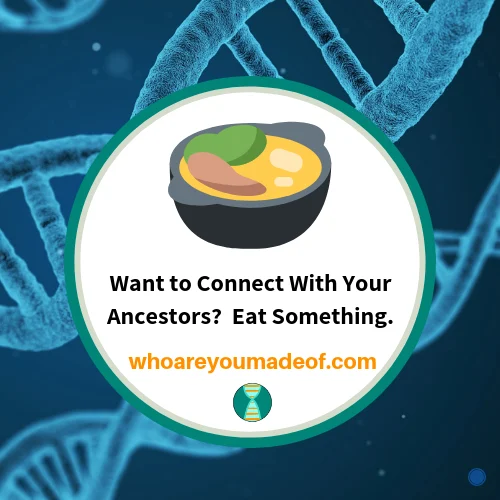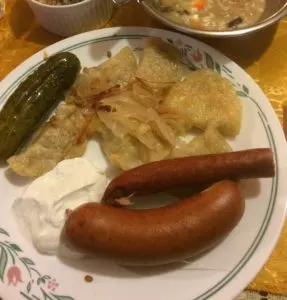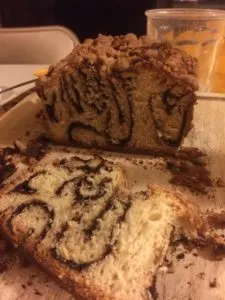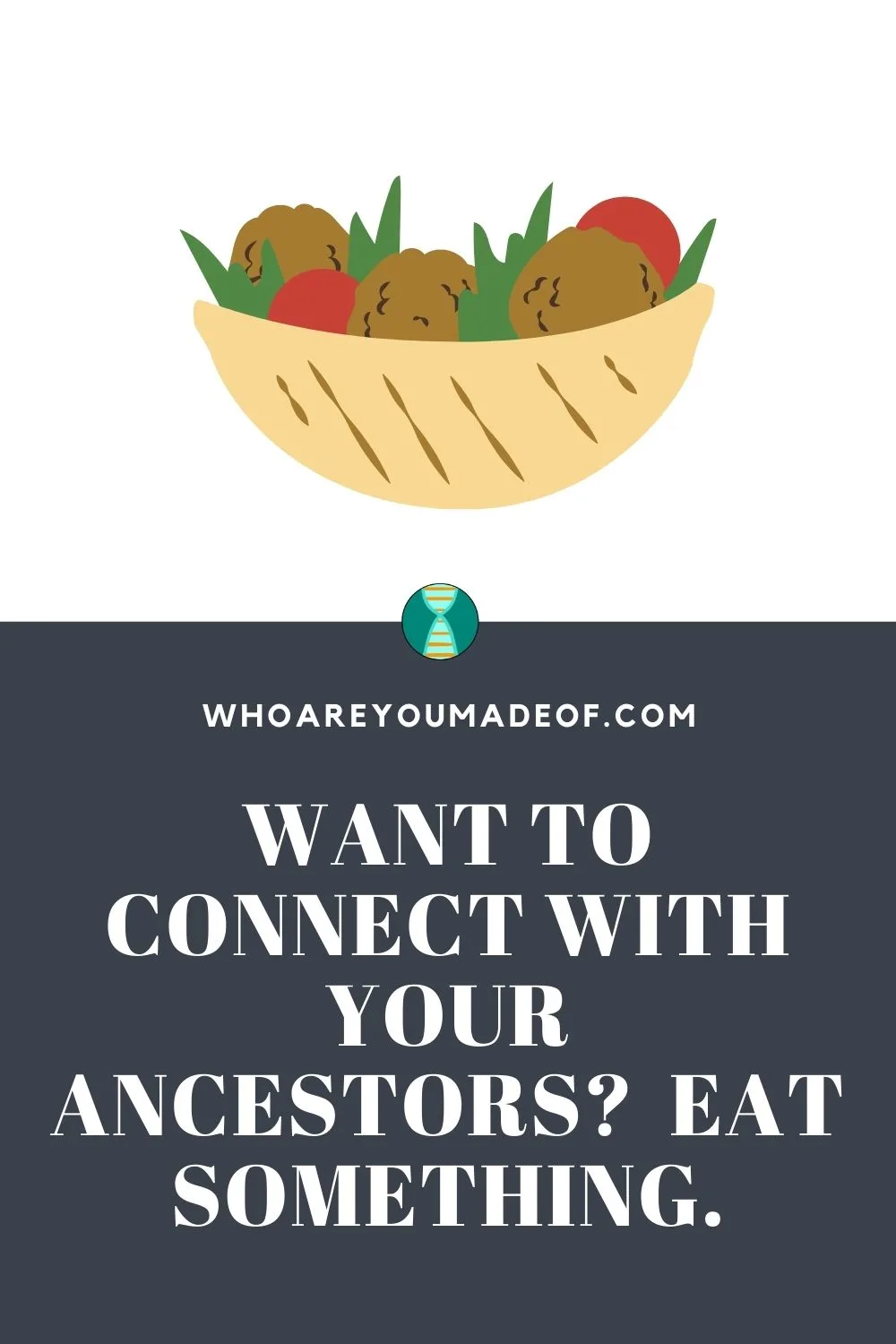What better what to feel a connection with your ancestors than through a beautiful homage to their culture in the form of food? Plus, it's a great way to help family members, especially kids, become interested in their family tree and their heritage.
If we are being honest, family tree research can be dry and flat sometimes. Most of us modern genealogists spend a lot of time looking at a computer screen, staring at names and dates on vital records.

When we are successful, our family tree grows and grows, but does this really help feel a connection with our heritage?
In my experience, one of the most beautiful aspects of family tree research, once we know who our ancestors were, is to learn about what their lives might have been like, where they lived and loved, and also very importantly, what our ancestral foods might have been.
I enjoy cooking, food, and family, and I don't think that I'm the only person who feels like sitting down with a good meal with the people who I love most is one of the most best ways to feel connected with each other.
I also enjoy genealogy and learning about my ancestors, and so, it seems like a very natural progression to begin to explore the culinary worlds of my ancestors and to share the results of my adventures with my family in the form of a delicious (hopefully!) meal.
How to learn about the foods that your ancestors might have eaten
We are living in this incredible time where almost any information that you might want is available at your fingertips. The internet can provide us a window into history and different culinary traditions.
This is exactly how I began to learn about some of the most important traditions and foods that my ancestors might have enjoyed.
No matter where your ancestors were from, or how far back you'd like to explore in your tree, I feel confident that you will be able to learn what you want to know from a few Google searches.
In my case, I knew I wanted to put together a celebratory meal, and it was December, so I began to research what people in Poland are likely to eat on Christmas Eve.
There were dozens of blog posts explaining traditional foods for this holiday.
After I chose the food items that I thought my family would enjoy, and then I set off searching for individual recipes, choosing the ones that I thought would be within my capabilities as a cook and called for ingredients that I felt confident that I could procure,
I would love to show you what I did to honor my Eastern European roots for Christmas last year, and I hope that it inspires you to do something similar for your family - and your ancestors.
Which part of your ancestry do you feel most connected with?
Many people who live in the United States and other parts of the world have ancestors that came from many different places, which means that there are likely dozens of cultural traditions, languages, histories, and of course, food traditions, that we may be almost completely unfamiliar with.
Do we have to "choose" just one part of our ancestry to explore?
I think whether or not to explore a particular part of our heritage, how in-depth to explore it, and whether or not we are interested in every aspect of our roots is an individual choice. Even though we know that all of our ancestors contributed to make us who we are today, some lines of our family tree might speak to us more loudly than others.
When examining my own family tree, there are a few people that really stand out to me. Two of those people are my Polish great-great grandparents, born in different regions of Poland, on my mother's side of the family.
On my dad's side of the family, I have a great-great grandmother born in Illinois to Polish parents. Due to several family tragedies, which include parents dying young, absolutely no trace of our Polish ancestry exists in our family culture or food traditions.
Even though my maternal grandmother always identified as Polish-American, there were only one tiny little detail that ever made this seem real to me, and that was that my mother said that my grandmother remembered her father (my Polish great-great grandfather) speaking to her in Polish, and she remembered a few of the words that he would say.
That's it. Nothing more. I didn't grow up with family heirlooms, letters, documents, stories, special foods that my grandmother made that she learned from her Polish grandmother. None of those things were available. The only thing that I ever "knew" was that my grandmother was Polish.
Even though I now know - after several years of family tree research - that my grandmother was both Poland and German - my Polish ancestry has retained its allure, and so when it came time to explore my roots through some neat culinary adventures, I chose to start with Poland.
How my first Polish Wigilia helped me understand more about my Polish ancestors
During my investigation into Polish Christmas Eve traditions, I learned that most families in Poland observe Wigilia, which means "vigil" in English. Similar customs are common in many countries, so it was easy for me to understand the foundation for this tradition. I wanted to be respectful and honor this tradition as closely as possible, so I did some reading about the background and customs related to this holiday in Poland.
There were several aspects of Wigilia that were completely new to me. For example, I made sure to set an extra place setting at the table for an unexpected guest or traveler and to honor the family who couldn't come that day, begin our meal by breaking oplatek with our Wigilia guests, and to serve 12 different types of foods.
We didn't follow every tradition, however. For example, many families in Poland follow the very old custom of refraining from eating meat on Wigilia, but we chose to follow a more modern religious interpretation of the meal and served Kielbasa and Kabanos.
Church laws have since been revised to permit meat on this day, but many families choose to follow the old tradition of no meat.

For our meal, I learned to make many new dishes, including kutia and krupnik, and a variation of pierogi that I had never tried to make before. In fact, I was excited that I actually enjoyed some of the foods that I learned to cook and added them to my "repertoire" of foods that I now occasionally cook.
This has helped me maintain the connection to my Polish roots that I felt while I was preparing the food for Wigilia.
Learning to make these foods was an amazing experience for me. For example, kutia is a very ancient (and delicious!!) food made with whole wheat berries.
When I first touched the berries and let them slip between my fingers, I could almost imagine generations of my ancestors before me treasuring this valuable and nutritious grain that must have been very important to them, and how lucky they must have felt to be able to prepare this dish for their families.
The most beautiful aspect of the occasion was enlisting the help of my children in cooking these traditional dishes. My oldest daughter baked two beautiful chocolate babkas, and is excited about trying a different recipe this year.
We all learned something about our heritage, began new traditions, and realized that we are more connected to other parts of the world than we had previously thought.


Conclusion
I hope that you found this post interesting, and that it gave you some as ideas as to how to connect more with the real people who make up your family tree. When I first started doing family tree research, I didn't know much about my mom's side of the family at all.
I've learned about the cultures of my ancestors, and used the resources available to me on the internet to learn about the history and culture of the places where they lived.
If you have questions, comments, or concerns about something that you read here, or if you would like to share how you have decided to connect with your roots, I would love to hear from you in the discussion below.
Thanks for stopping by today 🙂
